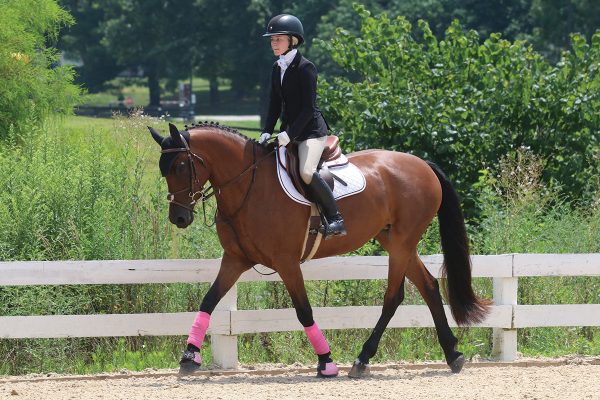
Polo wraps provide light leg protection during exercise or turnout. The soft, fleecy wraps conform to your horse’s leg for a more custom fit and are good for sensitive horses prone to boot rubs. They come in fun colors and are easy to wash.
However, it takes some skill to put polo wraps on so that they don’t come loose and trip your horse—or even injure a tendon. Here’s what you need to know about polos.
Using Polo Wraps
Polo wraps are best suited for schooling in an arena. They are not recommended for wet conditions, trail riding or cross-country. If they become soggy, they can slip down.
It’s important to learn to wrap correctly, otherwise you might do more harm than good. You want to wrap with even pressure: not too tight, not too loose, but just right. A wrap that’s too tight or applied with uneven pressure can injure your horse’s tendons. However, your wrap needs to be snug enough to stay in place.
Ready to Roll
Before you start, make sure your wraps are rolled the right way, so that the Velcro is where it needs to be to secure the wrap when you finish. Think “inside to outside”—whatever is on the inside of the rolled wrap ends up on the outside.
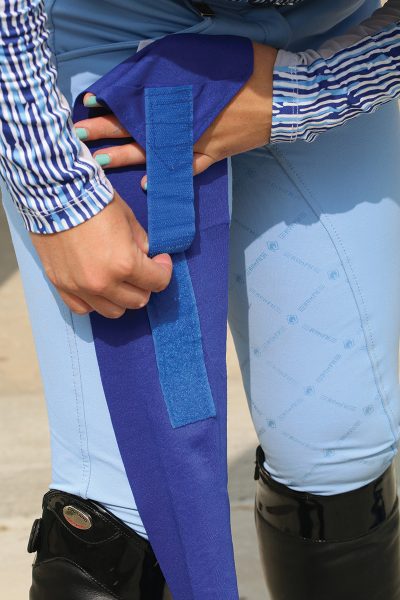
You want to roll the Velcro inside so that it winds up on the outside of the wrap. Attach the Velcro to itself, then take the doubled end, and roll tightly. Tuck in the ends so that it doesn’t come unrolled.
Starting the Wrap
Start by placing the edge of the wrap on the inside of the leg in the tendon groove below the knee (or hock, for the hind legs). As you wrap, bring the roll around the front of the cannon bone, then to the outside of the leg. Wrap inside to outside, front to back. An easy way to remember this is to think of the motion of your arms when swimming the breaststroke.
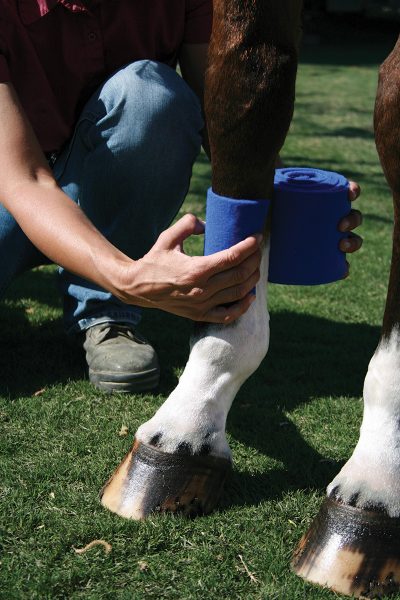
Wrapping front to back, only tighten slack across the cannon bone, and not against the tendons that run along the back of the horse’s leg. Be sure not to pull tight—just firm. It will take practice to get right!
With each turn, overlap the wrap about 50 percent and try to keep it evenly spaced so that you can make it down the leg and back up. For a smaller horse or pony, you may need to overlap more.
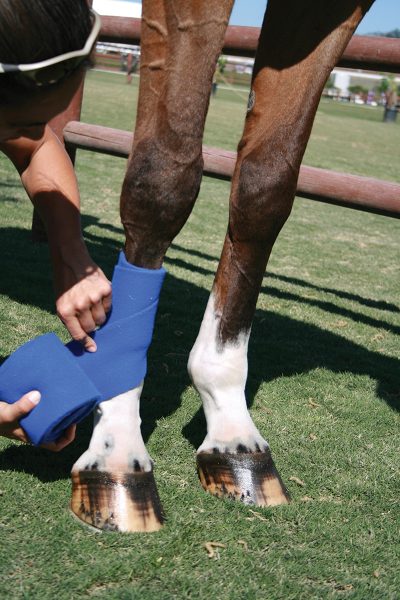
Finish With a “V”
When you get to the fetlock, sling the wrap just underneath the joint, then angle the wrap upward, forming a small upside-down “V” at the front of the fetlock.
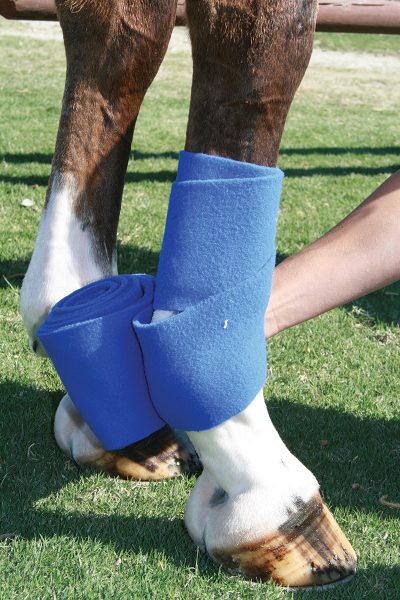
Continue wrapping up the leg. Ideally, your wrap will end just below the knee or hock, with the Velcro on the outside of the leg, pointing toward the back of the horse.
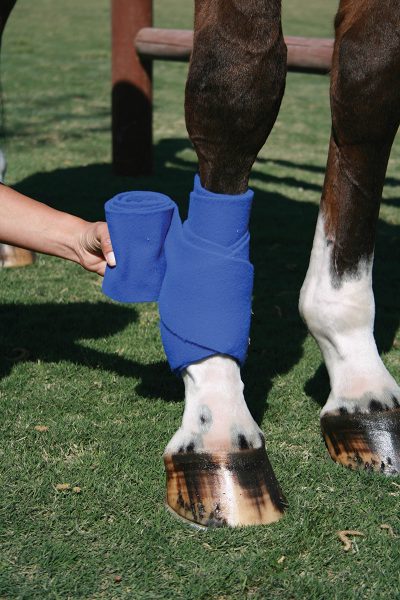
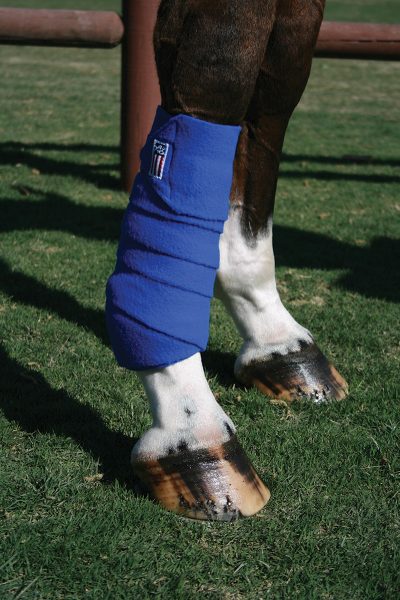
The finished wrap should be smooth and even, with no lumps, wrinkles or gaps. You should be able to fit at least a finger inside at the top and bottom. Repeat three more times, and you’re ready to ride!
This article about how to put on polo wraps appeared in the August 2021 Mini Digital issue of Young Rider magazine. Click here to subscribe!


